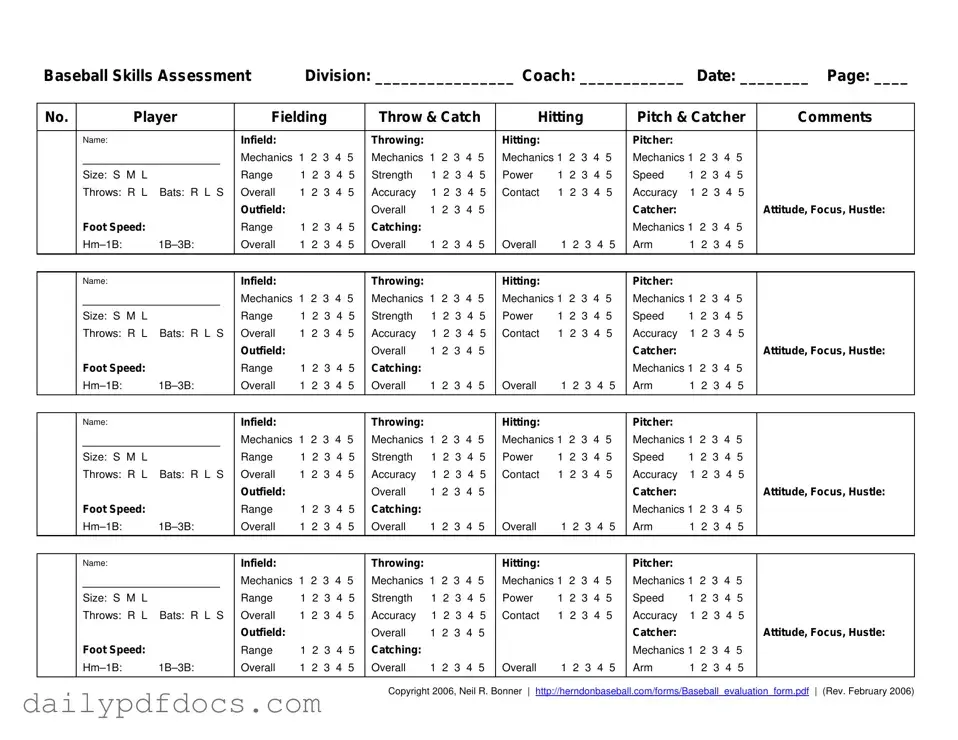What is the purpose of the Baseball Assessment form?
The Baseball Assessment form is designed to evaluate players' skills during tryouts for baseball teams. Coaches use this form to score players on various abilities, including fielding, throwing, hitting, and pitching. This standardized format ensures that all players are assessed consistently, allowing for fair selection for All-Star teams or house leagues.
How are players scored on the assessment form?
Players are scored on a scale from 1 to 5 in several categories. A score of 5 indicates exceptional ability, while a score of 1 reflects extremely poor performance. Scores of 2, 3, or 4 represent varying levels of skill in between. The overall scores help coaches make informed decisions about player selection based on their demonstrated abilities relative to peers.
What categories are included in the assessment?
The assessment covers multiple skill categories, including infield and outfield skills, throwing accuracy, hitting mechanics, and pitching abilities. Coaches also evaluate players on their attitude, focus, hustle, and speed. Each category contributes to the overall score, which helps determine a player's suitability for the team.
How long do tryouts typically take?
Tryouts generally last between 2 to 2.5 hours. The structured format includes various activities such as warm-ups, base running, infield and outfield drills, hitting practice, and evaluations for pitchers and catchers. This timeline allows coaches to thoroughly assess each player's skills and provide a comprehensive evaluation.
Can the assessment form be used for different types of leagues?
Yes, the Baseball Assessment form is versatile and can be used for different types of leagues. While it is primarily designed for All-Star travel teams, it can also be adapted for use in house leagues. Coaches can modify the evaluation criteria based on their league's specific needs while maintaining the standardized scoring system.

